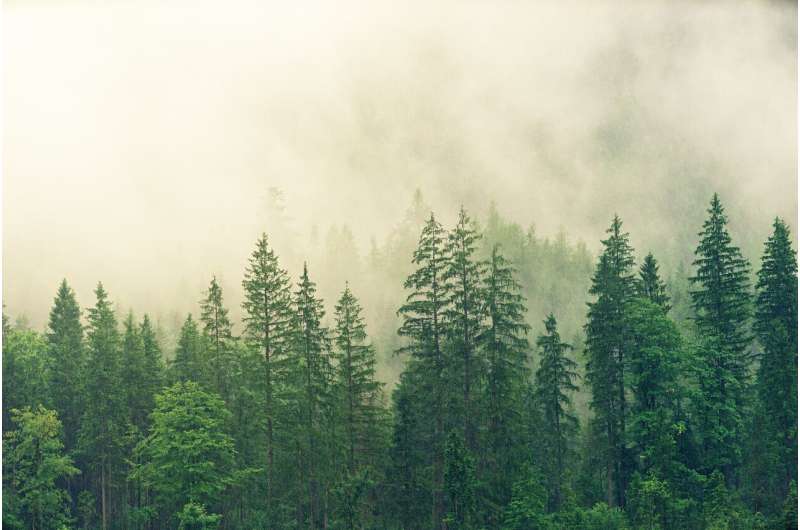Coastal flooding enhances methane buildup in forests

Forests are typically thought of as carbon sinks, absorbing more greenhouse gases from the atmosphere than they release. Trees and plants suck in carbon dioxide during photosynthesis and release oxygen back into the air. However, they also exchange methane with the atmosphere, primarily through microbes in tree trunks and in soil. Methane exchange in trees is more complicated than that of carbon dioxide: A tree's age, the season, and where on a tree a measurement is taken can influence whether the tree is determined to be a net source or sink of methane.
Yet as a changing climate modifies forested ecosystems, there is no guarantee that forests will function as sinks in the future. This uncertainty is particularly true for coastal forests, which are experiencing increased flooding from rising seas and more frequent storms.
Norwood et al. investigated how increased exposure to seawater will affect greenhouse gas exchange—specifically, of methane—in coastal forests. The authors sampled spruce and western hemlock across sites in the Pacific Northwest and pines along the Atlantic shore near Chesapeake Bay. They were particularly interested in how flooding affects the accumulation of methane in tree stems.
The researchers found that seawater exposure leads to elevated methane and reduced oxygen in tree stems and in soil as a result of increased soil salinity around inundated trees. Trees with denser wood featured higher stem methane concentrations. Furthermore, seawater decreased survival rates among flooded trees.
The results provide a glimpse into the changes under way in coastal forests, with implications for forest management and global methane budgets. The authors note that increased methane concentrations in flooded tree stems would short-circuit the soil's usual gas release pathway and alter forest emissions. In addition, more abundant greenhouse gases in the soil and stems could spell more methane emissions from forests swamped by rising seas.
More information: Matthew J. Norwood et al. Coastal Forest Seawater Exposure Increases Stem Methane Concentration, Journal of Geophysical Research: Biogeosciences (2020). DOI: 10.1029/2020JG005915
Provided by American Geophysical Union
This story is republished courtesy of Eos, hosted by the American Geophysical Union. Read the original story here.





















